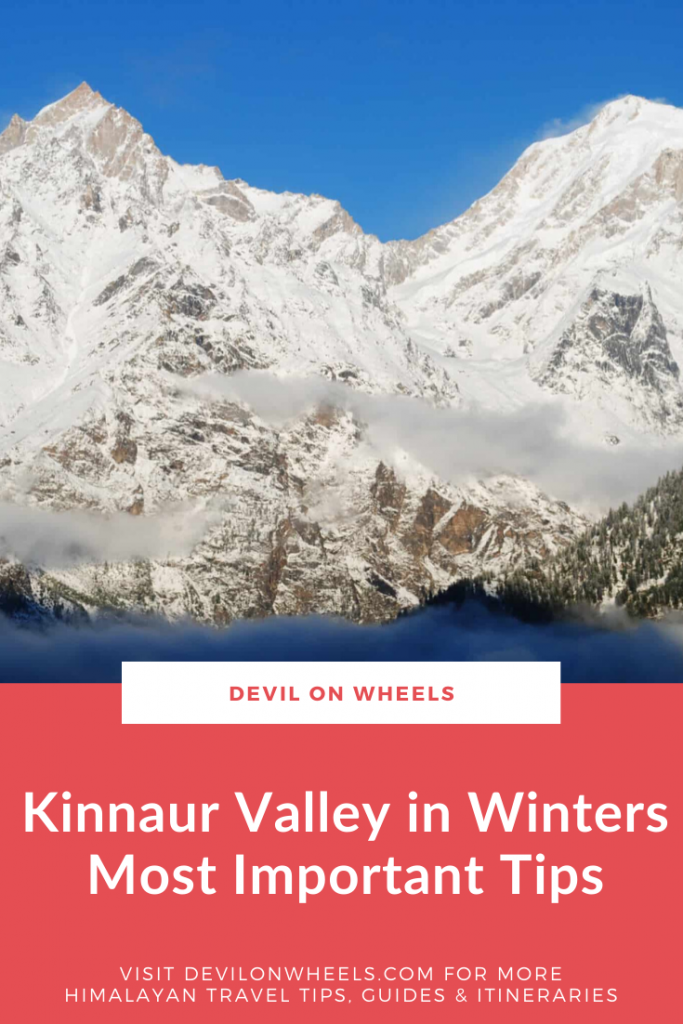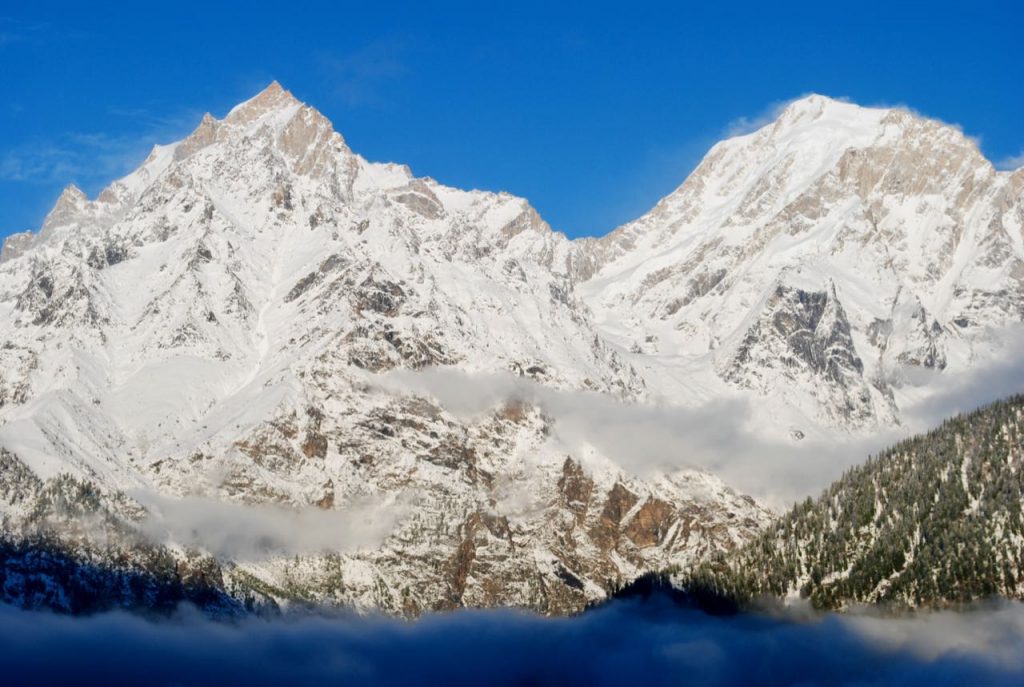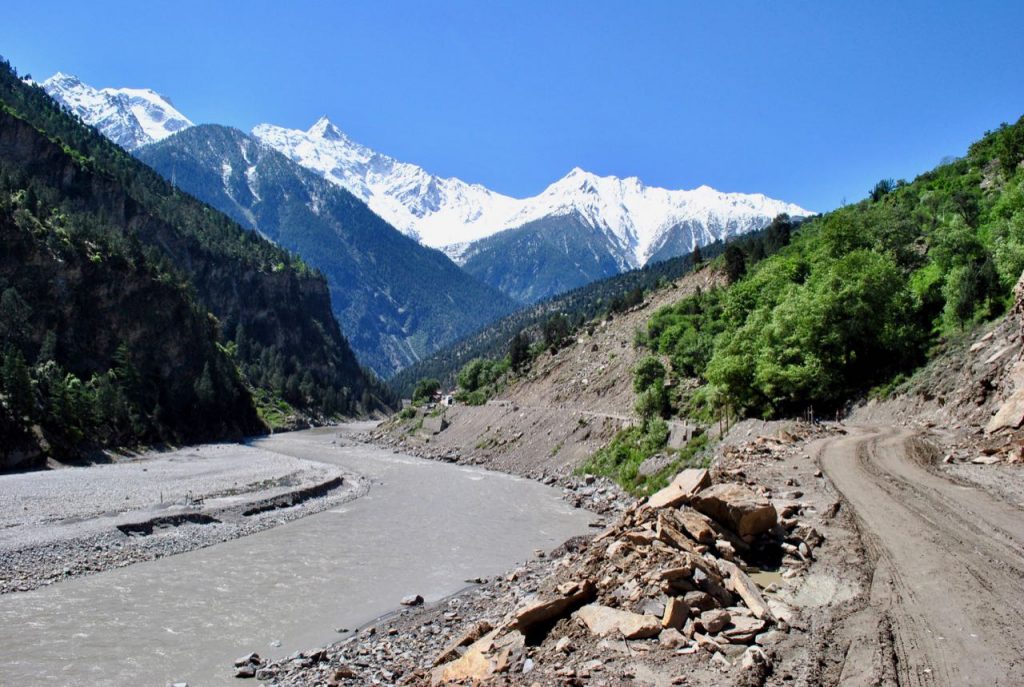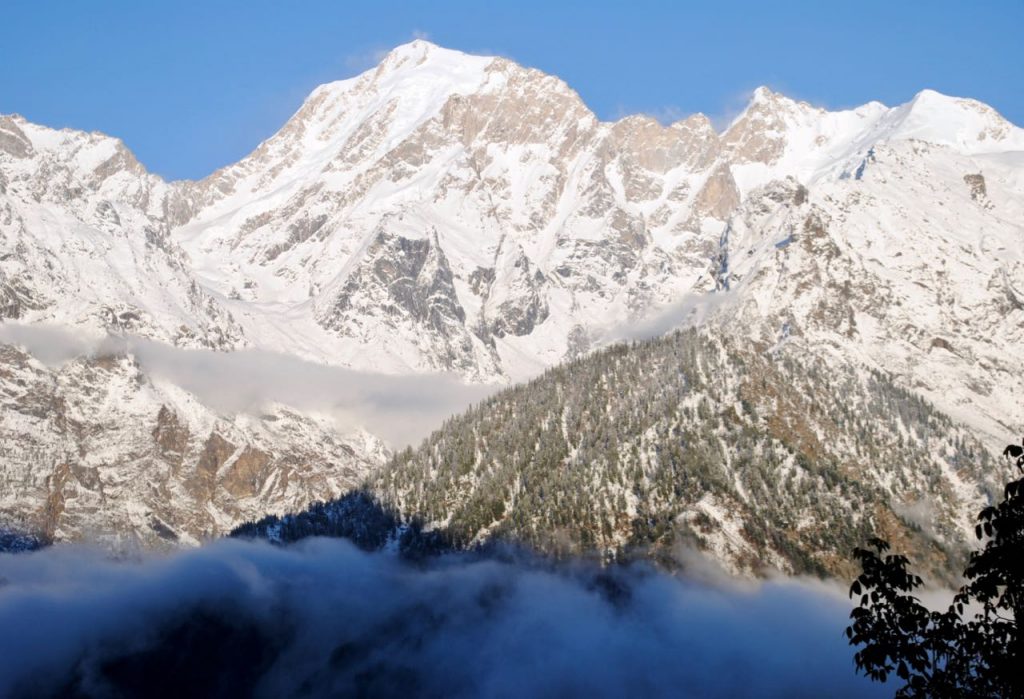Are you planning a freezing adventure trip in the coming winter? I have an answer for you, “how about planning a trip to Kinnaur Valley in winters and enjoy the views of frozen mountains in the Himalayas?”.

Well, the answer in the form of a question is very much appropriate when you think about making a winter moderate adventure trip up in the Himalayas. However, there are things you must be aware of while making a trip to Kinnaur Valley in winters.
Let's quickly dive into the details:
Can I make a trip to Kinnaur Valley in winters?
Kinnaur Valley, especially in winters, is not a region where you can land, having no clue about the place, especially when you are talking about an offseason trip to such a remote place in the Himalayas. Your habit of unplanned trips to the Himalayas could lead you to in somewhat trouble if you are interested in taking on this moderate challenge of making a trip to Kinnaur Valley in winters.
Hence, in today’s article, I will help you go through some basic tips covering Do’s and Don’ts, what and what not to expect in Kinnaur Valley in winters so that you are well prepared for it. I will also suggest a recommended itinerary for a trip to Kinnaur Valley in winters in my next article, which will help you plan your night stays in a much better way.
How different from summer?
In summers, you can pretty much follow my much recommended Kinnaur Valley Most Common Itinerary for your road trip. When making a trip to Kinnaur Valley in winters, it is important to strike a balance of basic amenities on offer, the temperature you need to deal with, and the probability of getting stuck for few days to weeks in the remote regions of Himalayas due to heavy snowfall.
So, should I travel?
Frankly speaking, trust me, being stuck in such a remote region with limited facilities in winters is not such a good feeling at all as you fantasize sitting on your couch in an AC room and ogling at the snowbound pictures of Kinnaur. So, you should give utmost attention to a couple of articles I am dedicating for traveling to Kinnaur Valley in winters. I am sure they will help you one way or the other.

Download your FREE high-resolution version pdf copy of this infographic guide about important tips on traveling to Kinnaur in winters. If, you liked it and found it helpful, please feel free to share it with your family and friends to help them too.
Are roads open in winters to Kinnaur Valley?
We have already discussed the best time to visit Kinnaur Valley is either spring season (March – April) or fall season (September – October). However, the road to Kinnaur Valley remains open all around the year and hence, you can make a Kinnar road trip any time of the year.
Even in November, December and January to March when snowfall happens, then as well, barring few days of heavy snowfall, the roads remain open to Kinnaur Valley. But, if you are planning a trip to Chitkul, then you will need to wait for March when the road opens from Sangla Valley to Chitkul. Occasionally the roads to Sangla Valley as well as Kalpa also get closed during heavy snowfall for few days.

What to expect on a road trip to Kinnaur Valley in Winters?
You may have been to Kinnaur Valley in summers or spring or autumn sometime back and of course, like me, would have imagined how would it look when filled with white gold we call snow.
How will these beautiful landscapes of Kinnaur Valley surrounded by towering the mountains draw your attention while offering hues of white color? How will life be when everything around in Kinnaur Valley is frozen?
Well, the answer only lies behind the adventure of taking a trip to Kinnaur Valley in winters. However, before you plan such a trip, please go through this list of things mentioned below. These are some things you should expect while on a trip to Kinnaur Valley in winter. By the way, if you have not heard about Kinnaur Valley, you can also read about it in the Wikipedia
1. Expect road closures for a couple of days to a week or so
This is the most probable and important thing to know when making a trip to Kinnaur Valley in winters. There is always a high probability of road getting closed due to snowfall, especially in January to mid-March. During heavy snowfall, the road can get closed for a few days to a week or so.
A week of a road closure in Kinnaur Valley is less probable but can happen. BRO/GREF/PWD tries to keep the road cleared of snow up to Reckong Peo, Kalpa, and Sangla Valley all around the year. Hence, go prepared with nothing major to work back at home even if you get stuck for a week and carry enough clothes & cash to survive the week. ATMs will be at the mercy of electricity and may run out of cash.
Have you read my detailed guide at Kinnaur Valley Travel Guide – Kalpa, Sangla & Chitkul
2. Expect driving on ice and snow on roads
If you are riding or driving yourself, then be careful of the ice and snow on roads that make the road conditions too much prone to skid. You should have experience of riding or driving in snow as one hard brake can lead you either flying down the adjacent gorge or crashing the car into the mountain. Any help with the vehicle will be difficult to find as most mechanic shops remain closed due to winters in most remote Himachal Pradesh.
Major towns like Reckong Peo may only have mechanics. The slippery conditions are especially possible on roads to Kalpa from Reckong Peo, towards Sangla Valley, towards Chitkul road closure point, and around Narkanda – Kufri on Hindustan – Tibet Highway

3. Expect Chitkul to be closed and sometimes Sangla Valley too
The road to Chitkul Village closes by December and reopens in the month of March. Sometimes during heavy snowfall, even the road to Sangla Valley closes. So, be prepared and plan the trip accordingly. Don’t make solo or lone treks to snowbound villages and always travel with some local guide or villager.
You should always carry your own water bottle and refill it as many times as you need water. It will not only keep you hydrated always, but you will also help in saving the Himalayas from plastic garbage. Remember, every tiny step counts and you can help save the Himalayas too !! 🙂 🙂
4. Expect basic stay options and basic food to eat along with other basic facilities
Many of the hotels or guest houses shut down, especially in Sangla Valley barring few handfuls. Stays are available in Kalpa as there are some excellent hotels and you will get good food too. However, Sangla Valley and Reckong Peo do not offer much.
As you travel further higher towards Puh and Nako, expect bare minimum stay options and basic food. Do not expect other facilities like mechanics, groceries, fruits, filter water bottles, etc.. to be available readily as well. You should be planning well and prepare for anything and everything you might need in the winter adventure to Kinnaur Valley, especially for higher or remote villages. You can also refer to the article on Good Hotels or Accommodation options in Spiti Valley & Kinnaur Valley and call them to ask about their winter’s availability.
5. Expect no running water in toilets and usage restricted to dry pits at times
The water in pipes freezes in high altitude places and hence, you may not find stay options having toilets with running water. In winters, the toilets remain locked, and at times, people only use dry pits (traditional toilets) where there is no water available. This freezing of pipes is mostly valid for Sangla Valley and higher up villages of Kinnaur Valley.
Hence, keep your expectations straight. Along with toilets, the washrooms may also not have any running water, and you need to rely on bucket water only. You can boil water and use it quickly to wash your face and hand a couple of times a day. So, those of you who bath every day and cannot live without it, winters will not be time to travel to Spiti Valley 😉 …
Interesting Fact: Did you know there is a difference between Hindustan – Tibet Highway and NH – 22? Read my article to know more at the link Hindustan – Tibet Road or Road to Spiti Valley | An Introduction
6. Expect freezing temperatures throughout the Kinnaur Valley in winters
Needless to say, as soon as you enter the Kinnaur region and especially the higher regions of Kinnaur such as Nako, you will start to experience bone-freezing temperatures. Hence, be prepared with winter gear and carry enough woolens to protect yourself include warm shoes as you will not feel your toes for most of the day.
You should read about clothing in my article Tips for Carrying Clothes for Spiti Valley Trip. It will help you prepare for Kinnaur Valley as well.

7. Expect only a handful tourists around or no tourists & handful public transport
There will not be many tourists around, and hence, options of sharing vehicles or dependent on public transport will be limited. The HRTC buses do run between Reckong Peo and Shimla daily, but then they will park the bus if it is not safe to travel ahead on both ends of that point. People walk the danger point on foot and exchange buses coming from either direction. This exchange of passengers is common in winters.
Pro Tip: If you are doing a self drive to Kinnaur Valley in Winters, then make sure to read the article 40 Must Have Things to Carry on a Self Drive Trip to the Himalayas
8. Expect no power (electrical) for a couple of days to a few weeks
Well, when it snows heavily, the electric poles are swayed away or gets buried in a load of snow. So, carry enough spare batteries and keep them warm somewhere as batteries will also freeze to exhaust. Hence, keeping them warm is the key to run them long. Your phones will also suffer from it as well. Keep phones inside your blankets/quilts/pockets to give them warmth. Carry enough cash as ATMs might not work as well.
9. Expect no mobile signals for a couple of days to a few weeks
Similar to electricity, you should not expect mobile signals for a few days to weeks. Hence, you should inform your safety back at home, friends, and relatives as soon as you see a possibility. Wifi in the bank, wifi in some hotel running a generator, use any possibility you can see available. Messages and Whatsapp work much better than calling homes. It is better to carry a BSNL/MTNL connection. Do not forget that there is a reason these roads are called the toughest roads in the world.
10. Expect limited medical help and support in case required
Similar to other things in winters, do not expect much from the medical facilities as well. At times people have to use a helicopter to be dropped off to the safe spot in case of a medical emergency. However, if the helicopter will be able to fly or not, you will still be at the mercy of weather gods.
Carry basic and any ongoing medicines in enough stock to last long for a couple of weeks at least. Do not rely on anything to be procured locally. It is not recommended to travel at all in winter in case you have some ongoing ailment or illness.

11. Expect locals being as warm & as welcoming as they are in summers
Needless to say, locals will greet you with the same warmth and hospitality as if you are visiting them in summers. They will do almost all the things to help and feel you comfortable in their homes. You will enjoy the real, local life when you visit in the winter months in Kinnaur Valley. It helps you witness each day of harsh life in winters for the locals.
Your problems back in air-conditioned rooms and cars will seem nothing, and I am sure you will return as a changed soul. The winter life in Spiti Valley is harsher than life in Kinnaur Valley but by no means simple.
By the way, if you are interested in making a more adventurous trip, then you can refer How to plan a trip to Spiti Valley in Winters
12. Expect to lose your soul in frozen beauty of Kinnaur Valley in winters
As in summers, the frozen beauty of Kinnaur Valley is no less noble, and your soul will fall prey to it at the very first sight of it 🙂 🙂 … I am sure that a part of your soul will be lost forever in Kinnaur Valley as you experience the winters in this remote part of the Himalayas.
Kinnaur Valley Winter Trip Itinerary
Download your FREE high-resolution version pdf copy of this trip to Kinnaur Valley in winters day by day plan infographic guide. If, you liked it and found it helpful, please feel free to share it with your family and friends to help them too.

Conclusion
As described in this first article of the series on traveling to Kinnaur Valley in winters, I have tried to highlight what things you can expect while making such an adventure trip. I hope you will take these things as inputs to arrive at the answer to the questions like “Should I make a trip to Kinnaur Valley in winters?” or “What to expect on a trip to Kinnaur Valley in winters?”.
This article will help you come to a fair and wise decision. Once, you have arrived at the decision, the coming article in the series will help you plan the right itinerary for a trip to Kinnaur Valley in winters.
Have a travel question?? You can subscribe to my YouTube channel and leave a comment to ask your travel questions on traveling to the Himalayas.
Feel free to share this article with any friends or family whom you know are making such a trip to Kinnaur Valley in winters. Also, please share your thoughts or inputs in case you feel that will add value and help other fellow travelers making a trip to Kinnaur Valley in winters.






4 Comments
Comments section gets closed in 90 days. To ask your travel questions, you can follow my YouTube Channel for a faster reply or for a much slower reply follow me on Instagram. :)
Hi Dheeraj,
Thanks a lot for the prompt reply..all your articles are awesome and knowledgeable.
I am not going to Ladhakh just the 360 degree tour from Delhi – Shimla- Kaza- Manali-Delhi.
Friday 18-delhi to Shimla night
Sat 19_ shimla to kinnaur(stay)
Sun 20 – kinnaur to nako/tabo(stay at tabo)
Mon 21- spiti/kaza
Tue 22- hiking komik langza
Wed 23 – kaza monestary and all local stuff
Thurs 24- kaza to chandratal(stay)
Friday 25 – chandratal to kasol(stay)
Saturday26 – kasol to Delhi 9pm ..Sunday morning will reach Delhi
Monday morning 28-delhi to mumbai
Let me know if there is any issue with above plan with EON and also Chandratal will be frozen in May or we can go to Manali from KAza or not.
Thanks in Advance,
Neha
Hey Neha,
Your plan is OK, 23 it will be Ki, Kibber. 21, you can cover Dhangkar and Tabo. Like I said, EON will surely face challenges and struggle on the route from Manali to Kaza as well as Kaza – Chandratal. Rest of the places as well you have to be careful
Chandratal will be frozen or not?
Also, roads are open from kaza to Manali?
Roads from Kaza to Manali have been opened now. Chandratal will not be frozen.